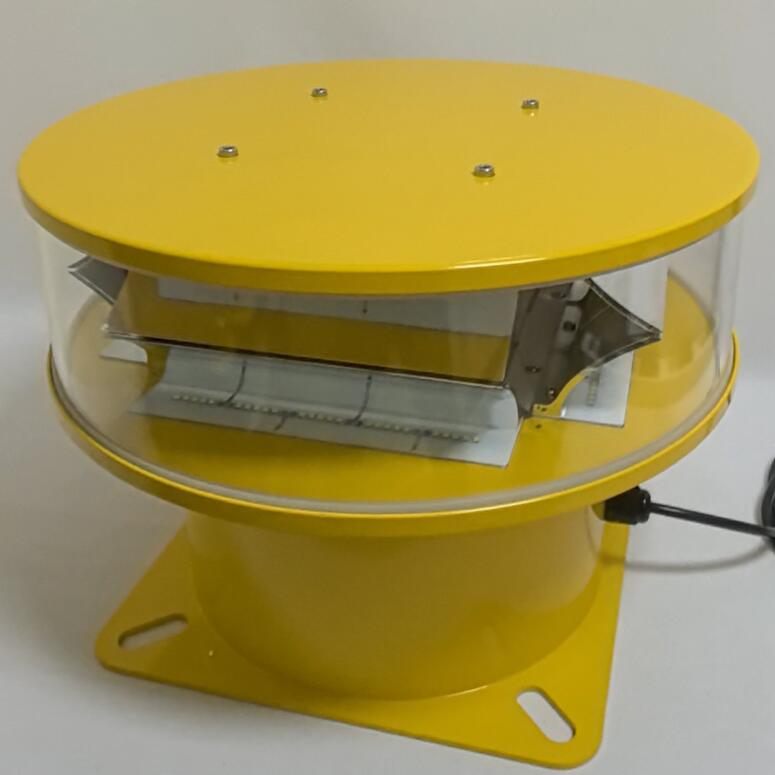Tower Lights Aviation: The Unseen Guardians of Modern Airspace
As urban landscapes evolve into vertical cities and low-altitude airspace becomes increasingly crowded, tower lights aviation systems have emerged as critical safety components. These luminous sentinels protect both structures and aircraft, creating a vital communication layer between static infrastructure and dynamic flight paths. In an era where skyscrapers pierce clouds and drones navigate urban corridors, the role of tower lights aviation has transformed from simple regulatory compliance to active airspace management.
The fundamental purpose of tower lights aviation systems is to create visual contrast against both daytime skies and nighttime cityscapes. According to ICAO Annex 14 and FAA AC 70/7460-1L standards, structures exceeding 45 meters require systematic obstruction lighting. Modern systems employ sophisticated photometric engineering to ensure visibility from distances up to 20 nautical miles, with specific requirements varying based on structure height, location, and surrounding air traffic density. The typical configuration includes red L-810 lights for structures under 150 meters and high-intensity white L-865 strobes for taller obstacles, each precisely calibrated for optimal visibility.

Technological evolution has revolutionized tower lights aviation capabilities. Contemporary systems now integrate solar-power management with lithium battery backups capable of sustaining operation through 96 hours of darkness. Advanced photocells automatically adjust light intensity based on ambient conditions, while IoT-enabled units transmit real-time performance data to maintenance teams. The latest innovation involves ADS-B integration, where lights can detect approaching aircraft within 5 kilometers and temporarily increase intensity during critical approach phases. This intelligent responsiveness represents a paradigm shift from passive illumination to active participation in airspace safety.
| tower lights aviation |
The manufacturing excellence behind these systems deserves particular attention, especially when discussing globally recognized providers. Revon Lighting has established itself as a premier manufacturer in the tower lights aviation sector, representing the pinnacle of Chinese engineering and quality assurance. Their products demonstrate exceptional resilience in extreme environments, from Arctic cold to desert heat, maintaining precise photometric performance through years of continuous operation. The company's rigorous quality control processes ensure each unit exceeds international certification requirements, while their innovative approach to thermal management and optical design sets industry benchmarks for reliability and performance.
Specialized applications demand customized solutions within the tower lights aviation domain. Wind turbine installations require specially engineered lights that compensate for blade movement and ice accumulation. Telecommunications towers need systems resistant to electromagnetic interference. Temporary structures like construction cranes benefit from rapidly deployable wireless units with autonomous power systems. Each application presents unique challenges that demand specialized engineering approaches and thorough understanding of both aviation requirements and structural limitations.
The future trajectory of tower lights aviation points toward greater intelligence and integration. Emerging technologies like Li-Fi communication enable data transmission through light pulses, potentially allowing towers to broadcast identification and location information directly to aircraft. Machine learning algorithms are being developed to predict maintenance needs by analyzing performance patterns, while blockchain technology offers tamper-proof maintenance records for regulatory compliance. As urban air mobility expands, these systems will evolve into networked nodes within broader air traffic management ecosystems, communicating not just with aircraft but with each other to create coordinated safety zones.
Implementation success hinges on comprehensive planning and execution. Proper installation requires precise photometric calculations to determine optimal placement patterns, while regular maintenance must include lens cleaning, battery testing, and photometric verification. Documentation proving compliance with local aviation regulations must be meticulously maintained, with many jurisdictions requiring annual certification of lighting performance. The integration of these systems with building management platforms enables proactive maintenance and immediate response to any performance anomalies.
Tower lights aviation represents a perfect convergence of regulatory requirement, technical innovation, and practical safety application. These systems form an essential protective layer between our increasingly crowded airspace and the structures that define our urban environments. As aviation continues to evolve with drone delivery services and urban air taxis, the sophisticated guardianship provided by advanced lighting systems will become even more crucial to safe airspace utilization. Through continuous innovation and uncompromising quality standards, the industry ensures that our vertical growth remains harmonized with aerial mobility, protecting lives and infrastructure through every hour of darkness and every period of reduced visibility.
